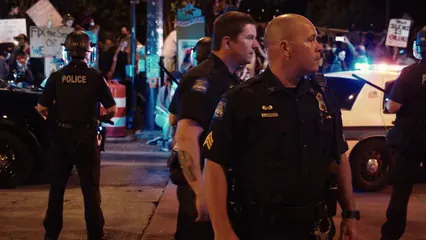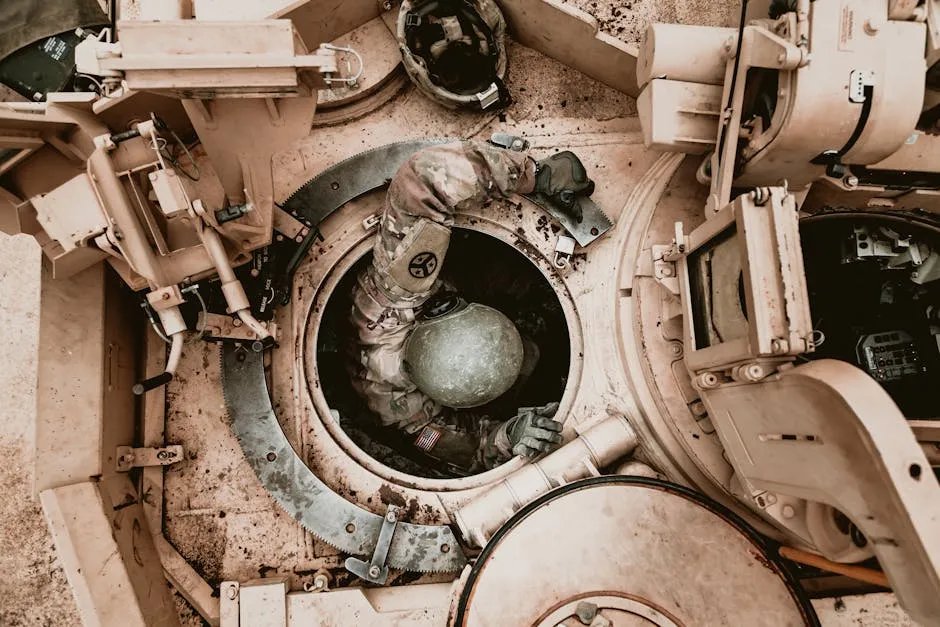
Why Is Catching Insurgents So Hard?
Introduction
Catching insurgents poses significant challenges for military and intelligence agencies. Insurgency is a complex form of warfare, often rooted in deep historical, social, and political contexts. This article aims to explore the various difficulties faced in identifying and capturing these elusive actors.
If you’re looking to dive deeper into the complexities of modern warfare, consider picking up Counterinsurgency Warfare: Theory and Practice. This book provides insights into the theoretical frameworks that underpin counterinsurgency operations, helping you understand the strategic challenges faced by military forces.
Summary and Overview
Several factors complicate the capture of insurgents, making it a daunting task. First, insurgents often blend into civilian populations, making identification nearly impossible. Furthermore, their motivation can stem from local grievances, which they exploit to gain support. This dynamic affects national security and military operations, leading to prolonged conflicts.

Key themes explored include the nature of insurgency, psychological factors influencing participation, and operational difficulties faced by military forces. Each aspect plays a crucial role in understanding why capturing insurgents remains a persistent challenge.
For those interested in the ethical implications of military engagements, The Utility of Force: The Art of War in the Modern World offers critical insights into how modern military strategies must evolve to address these new challenges.
The Nature of Insurgency
Understanding Insurgency
An insurgency is defined as an organized movement aimed at overthrowing a government or occupying force through subversion and armed conflict. Unlike conventional warfare, insurgencies rely on guerrilla tactics, making them difficult to combat.
Historically, insurgencies have emerged in response to political oppression, social injustice, or economic inequality. For example, the Viet Cong in Vietnam and the Taliban in Afghanistan both arose from local discontent. Insurgents exploit these grievances to rally support and recruit new members.

Globally, insurgencies are prevalent. According to recent statistics, over 60 active insurgencies exist today, affecting regions from the Middle East to Africa. Understanding the motivations behind these movements is vital for effective counterinsurgency strategies. What drives individuals to join such groups? Reflecting on these questions can provide insights into the complexities of insurgency dynamics.
If you’re intrigued by the historical context of such movements, check out The Anatomy of Fascism. This book delves into the societal factors that can lead to the rise of such movements, providing a broader understanding of insurgency roots.
Psychological Aspects of Insurgency
The Mindset of Insurgents
Why do individuals join insurgent groups? The answer often lies in psychological needs. Many insurgents seek a sense of belonging or purpose. They may feel marginalized or oppressed, looking for a way to reclaim agency in their lives.
Recruitment strategies play a crucial role here. Insurgent groups often target vulnerable populations, offering them identity and community. This creates emotional ties, making it harder for individuals to leave. The allure can be powerful, especially in regions with limited opportunities.

Ideology also shapes motivations. Insurgents might be driven by political beliefs or religious fervor. Understanding these ideologies complicates counterinsurgency efforts. It’s not just about defeating an enemy; it’s about addressing deep-rooted sentiments.
As we analyze insurgencies, consider these psychological factors. They offer valuable insights into why capturing insurgents is so challenging. Recognizing these elements can lead to more effective strategies against insurgent movements.
For those who want to further explore the psychology of war, The Insurgents: David Petraeus and the Plot to Change the American Way of War is a compelling read that examines the strategic shifts in American military thinking.
Operational Challenges
Intelligence Failures
Effective intelligence is vital for locating and capturing insurgents. However, gathering actionable intelligence in conflict zones is fraught with difficulties. Traditional methods, like human intelligence (HUMINT), often fall short.
HUMINT relies on local informants, who may fear reprisals or lack trust in authorities. This creates gaps in information, making it harder to track insurgent movements. Moreover, insurgents often blend into civilian populations, complicating surveillance efforts.

Technology can help bridge some of these gaps. Modern surveillance technology, including drones and satellite imagery, offers new avenues for intelligence gathering. Yet, these methods have limitations too, particularly regarding privacy and accuracy.
Improving intelligence-gathering techniques is essential. Consider equipping yourself with a Tactical backpack for your outdoor adventures. It’s perfect for carrying gear while keeping your hands free, ensuring you’re always prepared, whether for hiking or emergency situations.
The Role of Local Populations
Local populations play a crucial role in counterinsurgency efforts. They can either aid or obstruct military operations. On one hand, civilians may support insurgents due to shared grievances or distrust towards government forces. This support can provide insurgents with vital resources and information, making it challenging for authorities to isolate them.
Building trust within communities is essential. Without trust, military forces struggle to gain the cooperation of locals. Community engagement initiatives can foster relationships and encourage civilians to provide intelligence on insurgent activities. When communities feel safe and valued, they are less likely to support insurgents.

Yet, the lines between combatants and non-combatants often blur. Insurgents may hide among civilians, complicating identification efforts. This situation can lead to tragic consequences when military actions inadvertently harm innocent people. It raises ethical questions about the use of force and the importance of distinguishing friend from foe.
Reflect on how local populations impact conflict dynamics. Their support or resistance can shape the outcome of counterinsurgency efforts significantly. Understanding these complexities is vital for effective military strategies.
For those who wish to prepare for emergencies, a Survival gear kit is an essential addition. You never know when you might need to be self-sufficient in the wild!
Tactical and Strategic Limitations
Ineffectiveness of Conventional Military Tactics
Conventional military tactics often fall short in counterinsurgency scenarios. Traditional strategies focus heavily on direct confrontation, which may not address the root causes of insurgency. This approach can alienate local populations, pushing them closer to insurgents.
Military force alone is insufficient. Non-kinetic approaches, such as community engagement and economic development, are equally important. History offers numerous examples where military might failed to achieve lasting peace. In Vietnam, heavy-handed tactics often fueled resentment among locals.
An example is the U.S. involvement in Iraq, where aggressive operations sometimes exacerbated tensions. Understanding the unique context of each conflict is essential for developing effective strategies.

Readers should consider alternative strategies that prioritize dialogue and local engagement over brute force. Exploring these options can lead to more sustainable solutions and improved outcomes in counterinsurgency efforts.
For a historical perspective on military strategies, The Forever War provides a thought-provoking narrative that reflects on the implications of prolonged military engagements.
Evolving Nature of Insurgency
Catching insurgents is tough due to their evolving tactics. Insurgents continuously adapt their strategies in response to counterinsurgency measures. This evolution makes it challenging for military planners to predict their next moves.
Insurgents are increasingly using advanced technology. Drones, encrypted communications, and social media play significant roles in modern insurgency. These tools enhance their ability to organize and spread propaganda.

The implications for military planning are critical. Forces must remain agile and innovative. Relying solely on traditional tactics can lead to failures. As insurgents change their methods, military strategies must also evolve.
Understanding this dynamic is essential for effective counterinsurgency. What do you think the future holds for insurgency tactics? Reflect on how these changes might shape future conflicts and military responses.
As you think about the future of warfare, consider the role of technology in your own life. A Portable power bank can keep your devices charged during outdoor adventures or emergencies, ensuring you’re always connected.
Case Studies
Historical Examples of Failed Counterinsurgency Efforts
Counterinsurgency campaigns have not always succeeded. The Vietnam War offers a compelling example. Despite significant military resources, the U.S. struggled against the Viet Cong. Heavy-handed tactics often alienated local populations, fueling support for the insurgents.
In Afghanistan and Iraq, similar patterns emerged. The U.S. military faced challenges in distinguishing between insurgents and civilians. Operations sometimes harmed innocent people, leading to resentment. This resentment often translated into support for insurgent groups.
These historical examples highlight vital lessons. Successful counterinsurgency requires understanding local dynamics and building trust. Ignoring these factors can lead to failures, as seen in past conflicts.

As we reflect on these lessons, consider how they apply to current military strategies. What insights can we draw from history to inform our approach to modern counterinsurgency efforts?
To gain a deeper understanding of the conflicts in Afghanistan, Ghost Wars: The Secret History of the CIA, Afghanistan, and Bin Laden provides critical insights into the intelligence failures that shaped these conflicts.
Conclusion
Catching insurgents is a complex challenge. Insurgents often blend into civilian populations, making identification difficult. Their motivations, rooted in local grievances, complicate military efforts. To effectively address these challenges, a multifaceted approach is essential. This approach should combine military action, intelligence operations, and social strategies.

Policymakers and military leaders must adapt their strategies. Ignoring the complexities of insurgency leads to prolonged conflicts and ineffective solutions. By embracing a comprehensive strategy, we can improve our chances of successfully countering insurgencies.
For those interested in understanding the philosophical underpinnings of war, The Art of War by Sun Tzu is a classic text that remains relevant in military strategy discussions today.
FAQs
What are the main reasons why capturing insurgents is difficult?
Capturing insurgents is challenging due to the complexity of insurgencies, local dynamics, and intelligence gaps. Insurgents often conceal themselves among civilians, complicating identification and targeting efforts. Additionally, their motivations can stem from deep-seated local grievances, making them harder to isolate.
How do local populations affect counterinsurgency efforts?
Local populations play a vital role in counterinsurgency. Their support for insurgents can stem from shared grievances or distrust towards government forces. Engaging and building trust with these communities is essential for successful operations, as cooperation can significantly impact the effectiveness of military actions.
What historical examples illustrate the challenges of counterinsurgency?
Historical examples like the Vietnam War and the conflicts in Afghanistan show the difficulties of counterinsurgency. In Vietnam, U.S. forces struggled against the Viet Cong, often alienating local populations. Similarly, in Afghanistan, identifying insurgents amidst civilians proved problematic, leading to strategic failures.
Can technology help in capturing insurgents?
Technology offers potential benefits for capturing insurgents. Advanced surveillance tools, including drones and data analytics, can enhance intelligence gathering. However, these technologies also have limitations, such as privacy concerns and reliance on accurate data.
What lessons can be learned from past counterinsurgency failures?
Past failures highlight the importance of understanding local dynamics and building trust with communities. Strategies that rely solely on military force often backfire, pushing populations toward insurgents. A comprehensive approach that combines military and non-military actions is crucial for long-term success.
Please let us know what you think about our content by leaving a comment down below!
Thank you for reading till here 🙂
All images from Pexels




